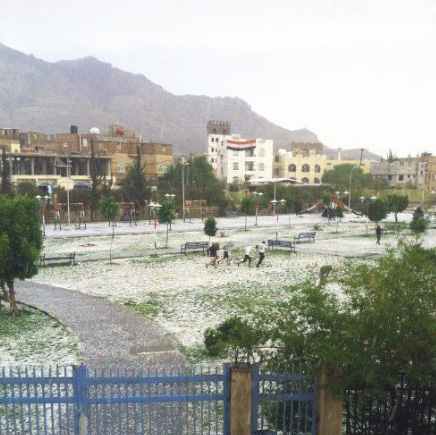
After a hail storm in Sanaa; photograph courtesy of Dr. Muhammad Gerhoum
The economic and political situation in Yemen these days is anything but heavenly, but then yesterday in a different kind of climate all hail broke loose.

After a hail storm in Sanaa; photograph courtesy of Dr. Muhammad Gerhoum
The economic and political situation in Yemen these days is anything but heavenly, but then yesterday in a different kind of climate all hail broke loose.
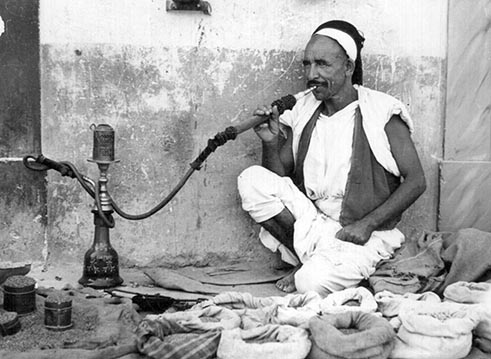
Above and below are two scenes in Tripoli, Libya from the 1950s, when it was still a kingdom. Both are from Christmas and New Years greeting cards with the greeting in English.
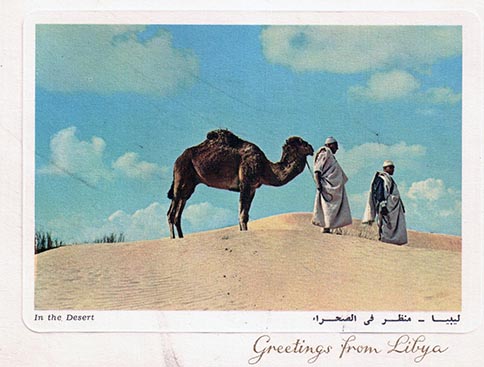 Photo by Jenah in Tripoli; printed in Italy
Photo by Jenah in Tripoli; printed in Italy
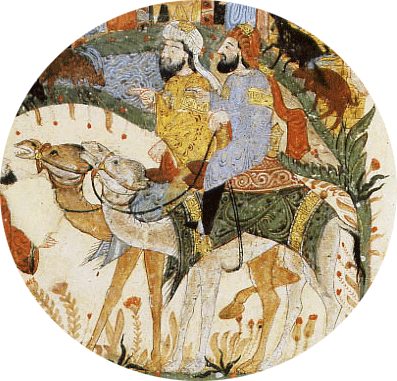
One of the most entertaining Arabic compendia on animal life, taken in the loose sense of the term for things that breathe or are thought to breathe, is the Hayât al-Hayawân (Life of Animals) of the Egyptian savant Kamâl al-Dîn Muhammad ibn Mûsâ al-Damîrî. Writing a century before Columbus discovered America, al-Damiri spins stories about animals with a variety of folklore about uses of animal products and parts. A scientist would no doubt shudder at the magical and literary focus of the text, only occasionally finding description useful today. A partial English translation was made by a British officer, Lieutenant-Colonel Jayakar, and published in two volumes in 1906 and 1908 in India. Unfortunately, this text is virtually inaccessible. I have looked at two copies, one in the New York Public Library and the other at the Library of Congress, and only with trepidation have I turned the fragile pages in this poorly bound volume. So far there is no digital version, which is a shame, since it is a delight to read.
Our author was a prolific copyist, quoting from over 800 other authors and providing a thousand entries, some simply an animal’s name and its more common synonym. Ironically, Jayakar’s Victorian sensitivity makes the translation as much an oddity as the primary work. Continue reading Tabsir Redux: Animal House in the 15th Century: Part 1
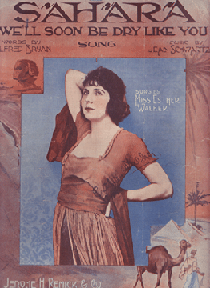
Vaudeville loved Orientalism. By the time Valentino played The Sheik, images of Middle Eastern scenes were well represented on stage and in music. Some of the lyrics from this time period are very clever. My personal favorite is a prohibition song from 1920 called “Sahara, We’ll Soon Be Dry Like You,” sung by the great comic singer Billy Murray. To hear this original 1920 recording in a digital format, click here.
Here are the words. Why not click above and sing along…
Sahara (We’ll Soon Be Dry Like You)
Words by Alfred Bryan, Music by Jean SchwartzVerse 1: King Rameses went to pieces seven thousand years ago,
And pass’d a law that Egypt must go dry.
He took the liquors from the “shickers” all the way to Jericho,
But kept his little toddy on the sly.
The desert of Sahara flow’d with honey so they say,
Till prohibition came along and dried it up one day. Continue reading Tabsir Redux: Sahara, My, My, but its Dry

In 2010 I had the privilege of participating in an international conference in Vienna on camels (not on camelback, of course). A book from this conference has now appeared. This is: Eva-Maria KNOLL – Pamela BURGER, editors, Camels in Asia and North Africa. Interdisciplinary Perspectives on their Past and Present Significance. 2012, 290 p., with 26 articles, 33 graphs/maps, 111 pictures, and an index. My article is on what camels eat, for which I have created a website.
Here is how the editors describe the book:
Humanity’s history is closely linked to those of camels. Without these remarkable animals we could not have inhabited the arid zones of Asia and North Africa, nor could we cope with today’s challenges of increasing desertification. Researching interactions between humans and camels therefore has been established at the Austrian Academy of Sciences ever since its foundation more than 160 years ago. The present publication is committed to this research tradition. This book assembles insights upon current and historical interactions between humans and camels. Thereby it is international and interdisciplinary from the outset and aims at intensifying a camel-related knowledge exchange between the natural sciences and the humanities. The here presented discussions of Old World camels (dromedary, Bactrian, wild camel) include such diverse topics as camel origin, domestication, breeding, raising and commerce. Moreover, camels’ significance is also discussed regarding socio-cultural and economic factors, music, folk medicine and veterinary medicine, as well as saving the last remaining wild camels. With an afterword by Richard W. Bulliet (New York), one of the world’s leading authorities on the camels’ history.
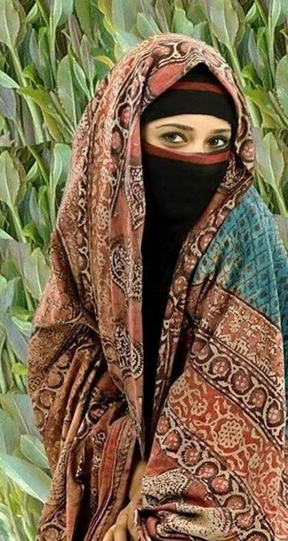
The following Yemeni poem about qat (Catha edulis), accompanied by the photograph above of a Yemeni girl, was provided by a friend.
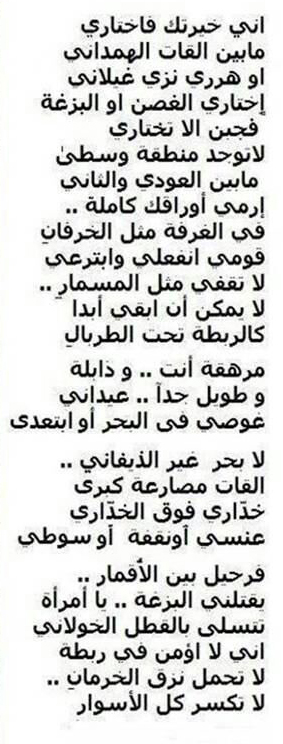
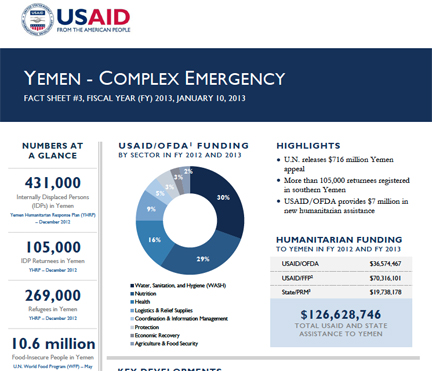
The drones capture the headlines when Yemen makes the news. The development arm of the U.S. State Department, USAID, also works in Yemen, although its activities have been greatly curtailed since the old days when I worked as a consultant on a number of USAID projects, starting in 1982 on the Agricultural Sector Assessment of Yemen of that year. For information on USAID’s current programs in Yemen, check out the relevant website. USAID provides a recent (January) fact sheet on the development situation in Yemen.
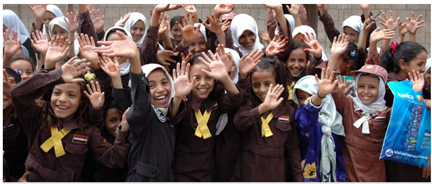

Last year I had the privilege of serving on the Albert Hourani Book Award Committee for the Middle East Studies Association. There were a number of excellent books submitted, but in the final analysis it was unanimous for a remarkable historical study by Sam White entitled The Climate of Rebellion in the Early Modern Ottoman Empire (Cambridge: Cambridge University Press, 2011), parts of which are available on Google Books. For an interview about the book, click here.
Below is the statement released by the committee:
Our committee reviewed over eighty books for this year’s Albert Hourani Book Award. Manycommittee members commented on the large number of high quality works from the incredibly rich and diverse body of nominations. Finally settling, unanimously, on a single work of superior scholarship could not have been achieved without the conscientious, diligent and professional attention my four fellow committee members gave to their colossal task: Michael Bishku of Augusta State University, Terri DeYoung of the University of Washington, Devin DeWeese of Indiana University, and Daniel Martin Varisco of Hofstra University.
The committee has chosen Sam White’s masterful work, The Climate of Rebellion in the Early Modern Ottoman Empire, published in 2011 by Cambridge University Press as the 2012 recipient of the Albert Hourani Book Award. Sam White is an assistant professor of history at Oberlin College. Continue reading Rebellion in the Ottoman Empire